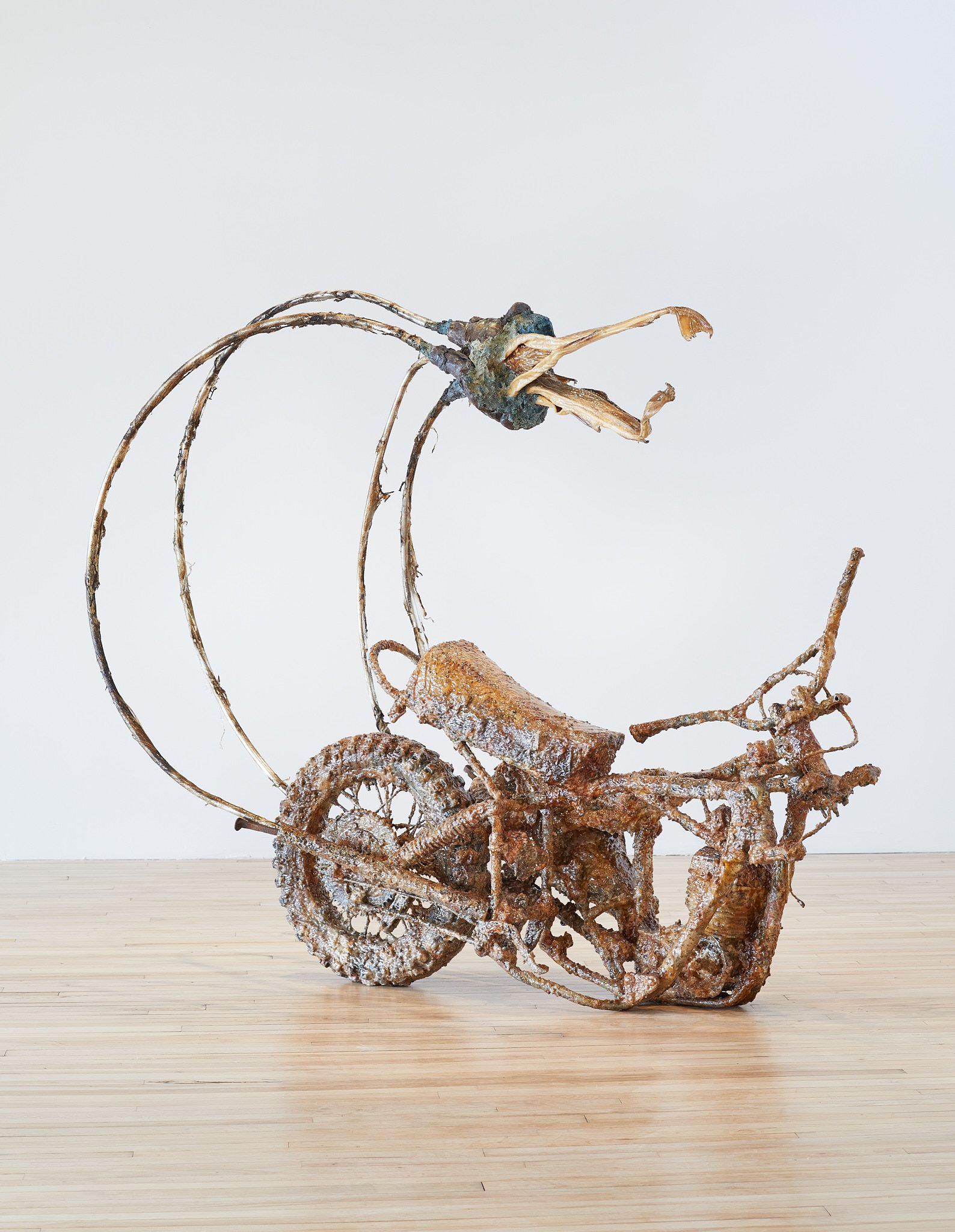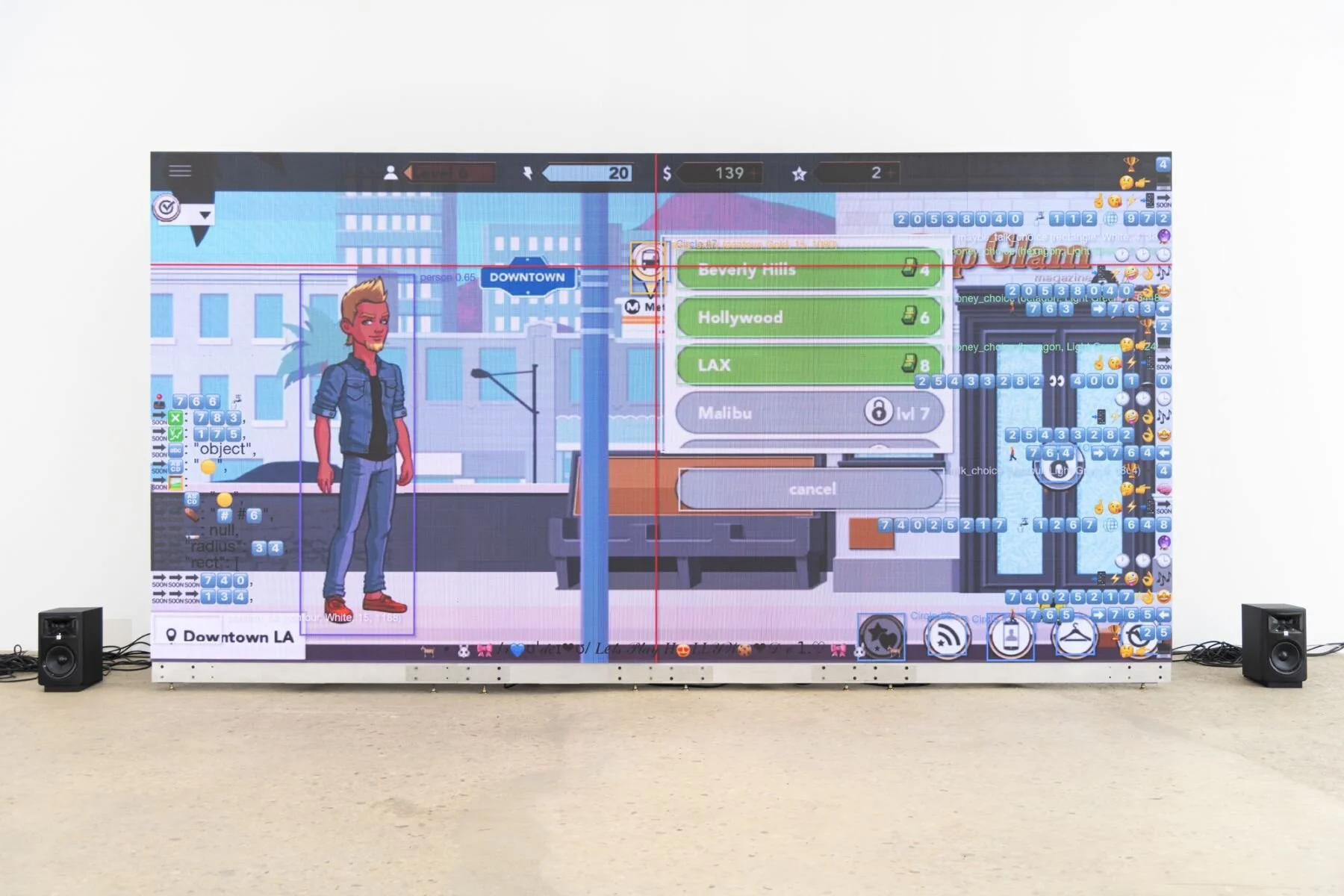Contemporary Hieroglyphs
The Friezes of Bob Clyatt
Bob Clyatt: A More Human Dwelling Place
Anthony Philip Fine Art
June 30 to July 30, 2017
Cscape #41, 2017, Hydrocal blend and Carrara marble, 12 x 19 x 3 inches. Image courtesy of the gallery.
“In the beginning was the Word, and the Word was with God, and the Word was God. Through Him all things were made; without Him nothing was made that has been made.”
This “Word” from the Bible translation came from the original Greek term, “Logos”, in earlier manuscripts. For much of the world today, this term, “Logos”, through which “all things are made” is a different entity entirely. The power structures of corporate capitalism have altered the world in their own omnipotent manner, reshaping the terrain and climate of the Earth itself. Rather than a messiah or savior, capitalism acts more like a chthonic god of destruction, swallowing the world to satiate its endless appetite. Its presence is hardly immaterial, of course; instead, it is made manifest through the countless objects it churns out, sells, renders obsolete, and buries out of sight
From this cycle fueled by manufactured desires of the masses emerges a new “logos”: “the word” that doesn’t have to be read to be understood and is instantly globally comprehensible. These transnational corporate logos have emerged as today’s hieroglyphs — sacred writing — with their meanings found not in language but in the global circulation of capital. Bob Clyatt’s relief sculptures prominently feature many such logos embedded in, or emerging from, the monotone white surfaces. In his recent show at Anthony Philip Fine Art in Bushwick Clyatt exhibited a body of work combining Hydrocal plaster and Carrara marble dust, cast in molds sculpted from clay. These compositions feature human figures juxtaposed alongside 3D-printed logos and objects. These reliefs merge the human form with the fragments of life evident under late stage capitalism, using a form and materiality recalling sacred friezes prevalent in earlier periods of art history.
Cscape #27: Nice!, 2016, Hydrocal blend, Carrara marble, pigments, 21 x 33 x 12 inches. Image courtesy of the gallery.
Clyatt’s work isn’t purely figurative but often features the female human form in a prominent role. Cscape #27: Nice! — one of his deepest reliefs in the show — features a nude woman emerging from a niche — or is it a sarcophagus? — surrounded by toys, logos, and, another form of contemporary hieroglyphs, emojis. The figure is presented in such deep relief that she appears ready to break apart from the frieze from her own weight. She leaps from one abyss to another, from the solidity of plaster and marble towards thin air and an uncertain fate.
Cscape #43 (Hanged Woman), 2017, Hydrocal blend, Carrara marble, glazed stoneware, 18.5 x 28.5 x 3 inches. Image courtesy of the gallery.
Another piece, Cscape #43 (Hanged Woman) presents the figure hanging upside down from a slender tree branch in a composition that recalls the iconic “Hanged Man” tarot card. The figure is made from ceramic and is surrounded by a halo of radiant lines. Beneath her head are fragmented logos and objects, recognizable yet incomplete, heaped together: reminiscent of a garbage pile. The fact that even a single letter — the “X” monogram from the “Exxon” logo — can immediately bring to mind the entire corporation behind it is evidence of the power that these logos hold.
Cscape #48 (Rhizome 2), 2017, Hydrocal blend, Carrara marble, mosaic glass, 36 x 21 x 5 inches. Image courtesy of the gallery.
Some works are devoid of figures: Cscape #48 (Rhizome 2) features logos and objects streaming in from outside the frame towards a pile-up in the center. The feeling of motion is amplified by the presence of lingering objects: power cables, phone cords, ropes, and chains direct the movement of the composition.. Sculpted into the piece are building-block shapes contrasted against a wavy background, recalling sand dunes at a bird’s-eye view. Comprised of buildings, earth, and streams, Cscape #48 takes on the quality of a landscape dominated by human artifice, a chaotic map of the shifting sands of commerce frozen in time, plaster, and marble.
Cscape #49, 2017, Hydrocal blend, Carrara marble, mosaic glass, pigment, 13 x 18 x 4 inches. Image courtesy of the gallery.
Most of the work in the show embraces the milky white of Clyatt’s Hydrocal and marble concoction, but there are passages of color. Cscape #49 shows a jar spilling objects forth into a heap against a deep crimson ground. Cscape #32 features a smooth surface covered with rusty iron oxide punctured with multiple holes that characteristically reveal a hidden chaos beneath. The scene resembles a landfill riddled with sinkholes where the neglected detritus of capitalism breaks out of its tomb, but there is no resurrection possible here: just obsoletion and neglect.
This “More Human Dwelling Place” referenced in the title of Clyatt’s show isn’t a place you can find, it’s a location you have to create, a niche that you carve out of the world similar to the figures in his reliefs. Commerce accelerates, crashes, fragments, and coalesces around you, but like Clyatt’s figures your gaze is directed elsewhere. Where is this other place? Whether it’s toward something outside of this world of logos, or introspectively inward towards a quiet introspective moment amidst the maelstrom, wherever the gaze lands it must be a better place than this.
Cscape +32, Hydrocal blend, Carrara marble, iron paint, pigments, 17 x 28 x 5 inches. Image courtesy of the gallery.
















